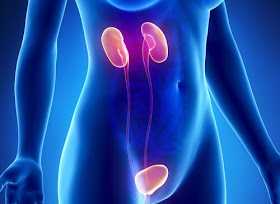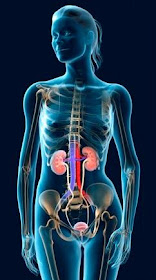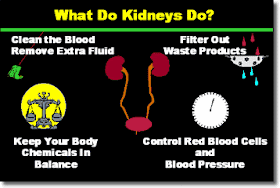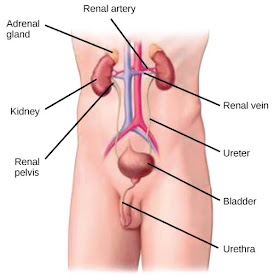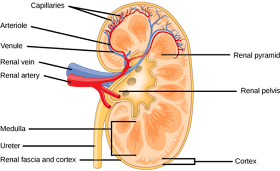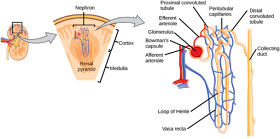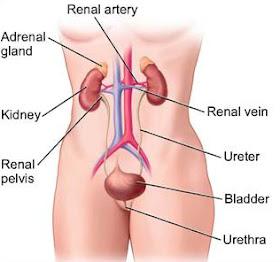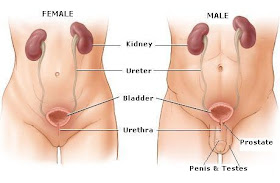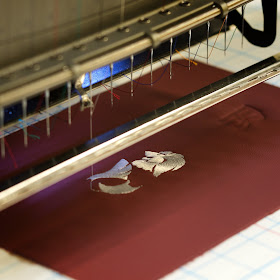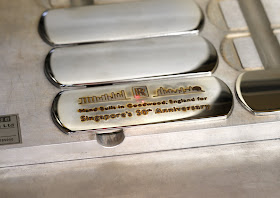Source Website: http://cancerfactsheet.org/kidney-health-10-things-you-should-know/
By Health WordPress, 3 July 2015
By Health WordPress, 3 July 2015
PHOTO: The most common causes of kidney disease are diabetes and high blood pressure. You can do a lot to reduce your risk of kidney disease if you control your blood sugar levels and blood pressure.
By Health WordPress, 3 July 2015
https://blogger.googleusercontent.com/img/b/R29vZ2xl/AVvXsEiTckvWsV-Wn9wuqZM25L_9ngINAWH97iGTkSu8tHsE_UFoqbUpPMyTAh_pSbRQgIiK8xUfnJY_GwBuy09hXI1kcXRGVoANeAFnGLZ57h1RFaRXsTyZhzU81E3BiMydq312FdmDBZzBXxk/s1600/kidney-failure.jpg
http://steptohealth.com/wp-content/uploads/2014/12/kidney-failure.jpg
http://cancerfactsheet.org/kidney-health-10-things-you-should-know/
The most common causes of kidney disease in Canada are diabetes and high blood pressure. You can do a lot to reduce your risk of kidney disease if you control your blood sugar levels and blood pressure.
By Health WordPress, 3 July 2015
https://blogger.googleusercontent.com/img/b/R29vZ2xl/AVvXsEiTckvWsV-Wn9wuqZM25L_9ngINAWH97iGTkSu8tHsE_UFoqbUpPMyTAh_pSbRQgIiK8xUfnJY_GwBuy09hXI1kcXRGVoANeAFnGLZ57h1RFaRXsTyZhzU81E3BiMydq312FdmDBZzBXxk/s1600/kidney-failure.jpg
http://steptohealth.com/wp-content/uploads/2014/12/kidney-failure.jpg
http://cancerfactsheet.org/kidney-health-10-things-you-should-know/
The most common causes of kidney disease in Canada are diabetes and high blood pressure. You can do a lot to reduce your risk of kidney disease if you control your blood sugar levels and blood pressure.
Hemodialysis can be done at home. Although hemodialysis is usually done in a hospital or clinic, you may be able to have it done at home. You will need special training to do this.
PHOTO: Understanding kidneys and its functions
Picture posted by Gabay sa Kalusugan on 3 November 2014
https://blogger.googleusercontent.com/img/b/R29vZ2xl/AVvXsEif7-vdn3H2k8g7MgQsjBndyaQqzw9yn_md6JPiJ7stsY2r63CNWFgOoJ1PxW4C-fdksPeww-NSY6IHjkiGasJ1XbjrOUgoSghEWdOWCjTPHgwUzyUoE8R8gcQdHf09aRPLNQ1Btl2tXjg/s1600/10628185_471459102992587_3000885805278349833_n.jpg
https://fbcdn-photos-e-a.akamaihd.net/hphotos-ak-xtf1/v/t1.0-0/10628185_471459102992587_3000885805278349833_n.jpg?oh=13140a43d28201b2a46e994379475f80&oe=5640AC71&__gda__=1447489578_04a8e56c7cfb5f713fa2d9cc9eefe9fe
https://m.facebook.com/201156890022811/photos/a.290664447738721.1073741842.201156890022811/471459102992587/?type=1&p=10
- Cleanse the blood, eg. remove urea & creatinine (dead muscle cells)
- Removal of extra fluid (if not the following may result: puffy foot, cheeks and other parts of the body)
- Keep the body chemicals and fluid in balance, eg. makes the electrolytes (ions) needed to isolate and dispose of toxic wastes in the body
- Produce hormones, eg. Angiotensin to control blood pressure, Enythropoietin to create red blood cells, and synthesize vitamin D
Picture posted by Gabay sa Kalusugan on 3 November 2014
https://blogger.googleusercontent.com/img/b/R29vZ2xl/AVvXsEif7-vdn3H2k8g7MgQsjBndyaQqzw9yn_md6JPiJ7stsY2r63CNWFgOoJ1PxW4C-fdksPeww-NSY6IHjkiGasJ1XbjrOUgoSghEWdOWCjTPHgwUzyUoE8R8gcQdHf09aRPLNQ1Btl2tXjg/s1600/10628185_471459102992587_3000885805278349833_n.jpg
https://fbcdn-photos-e-a.akamaihd.net/hphotos-ak-xtf1/v/t1.0-0/10628185_471459102992587_3000885805278349833_n.jpg?oh=13140a43d28201b2a46e994379475f80&oe=5640AC71&__gda__=1447489578_04a8e56c7cfb5f713fa2d9cc9eefe9fe
https://m.facebook.com/201156890022811/photos/a.290664447738721.1073741842.201156890022811/471459102992587/?type=1&p=10
PHOTO: Diagnosis
Kidney disease can be so silent in the early stages that the patient may be perfectly well without any symptoms.
However, apart from a physical check up, patients usually need urine and blood tests to detect renal disease.
The urine is usually tested for:
1. the presence of blood, a condition known as haematuria.
2. the presence of protein or proteinuria
3. cellular debris (also called casts)
The blood is tested also for abnormally high levels of substances that accumulate in the body in the presence of kidney failure. They include:
1. the blood urea level
2. the blood creatinine level
3. other substances such as potassium and bicarbonate.
Posted by Singapore General Hospital on 25 February 2014
https://blogger.googleusercontent.com/img/b/R29vZ2xl/AVvXsEinwDzHWXs0L4w41FibmiTwC_eBf72kAzAgglU5Bm7Wl3507t33S4O_gF4vCeK0cmPfMUOPEWsFC2dvRbnSd2JqarV2i8XXgHu3TR51r2Jy-oyB9k-dzB_HbpEPrxuZ5ayxCCFvMl1Vkbk/s1600/KidneyFailure.gif
http://www.singhealth.com.sg/PatientCare/ConditionsAndTreatments/PublishingImages/KidneyFailure.gif
http://www.sgh.com.sg/Patient-Services/conditionsandtreatment/Pages/KidneyFailure.aspx
Kidney disease can be so silent in the early stages that the patient may be perfectly well without any symptoms.
However, apart from a physical check up, patients usually need urine and blood tests to detect renal disease.
The urine is usually tested for:
1. the presence of blood, a condition known as haematuria.
2. the presence of protein or proteinuria
3. cellular debris (also called casts)
The blood is tested also for abnormally high levels of substances that accumulate in the body in the presence of kidney failure. They include:
1. the blood urea level
2. the blood creatinine level
3. other substances such as potassium and bicarbonate.
Posted by Singapore General Hospital on 25 February 2014
https://blogger.googleusercontent.com/img/b/R29vZ2xl/AVvXsEinwDzHWXs0L4w41FibmiTwC_eBf72kAzAgglU5Bm7Wl3507t33S4O_gF4vCeK0cmPfMUOPEWsFC2dvRbnSd2JqarV2i8XXgHu3TR51r2Jy-oyB9k-dzB_HbpEPrxuZ5ayxCCFvMl1Vkbk/s1600/KidneyFailure.gif
http://www.singhealth.com.sg/PatientCare/ConditionsAndTreatments/PublishingImages/KidneyFailure.gif
http://www.sgh.com.sg/Patient-Services/conditionsandtreatment/Pages/KidneyFailure.aspx
We don’t necessarily need two perfectly functioning kidneys. We have two kidneys that help to eliminate excess water and waste products from the body, but we only need one functioning or two partially functioning kidneys to stay healthy. That means that kidney disease has to be quite severe before the kidneys can’t do their job properly, and it means that someone with two healthy kidneys can donate one and still live a healthy life.
Your kidneys do a lot more than remove excess water, salt, and waste products from your body. They also help to regulate the levels of potassium, calcium, and phosphorus in your blood, remove medications from your body, produce a hormone that controls the production of red blood cells, and activate vitamin D.
PHOTO: Kidneys' location and function
Kidneys filter the blood, producing urine that is stored in the bladder prior to elimination through the urethra.
They are located in the peritoneal cavity.
Posted by Boundless, “Kidney Structure” on 21 July 2015
https://blogger.googleusercontent.com/img/b/R29vZ2xl/AVvXsEg-23oNJVPfRpk97tdh1zJrgiJrkhJPRYz1VuRK5aCNkwT53mC56ZVuw50hBwbk-MW0mTRv-nDYKaRa1Q2VpleMAqEOnRl_6h-BVGPN3YAeYUi3yEhNADqFVN5E5HiRpzLErWffTLzA2iU/s1600/figure-41-03-01.jpe
https://figures.boundless.com/19684/large/figure-41-03-01.jpe
https://www.boundless.com/biology/textbooks/boundless-biology-textbook/osmotic-regulation-and-the-excretory-system-41/human-osmoregulatory-and-excretory-systems-229/kidney-structure-860-12107/
In the early stages of kidney disease, there are no symptoms, and tests that measure kidney function may be normal. But as kidney disease progresses, the results of blood or urine tests may show abnormalities indicative of kidney disease. If blood or urine tests indicate that you may have kidney problems, you will likely undergo several other tests (e.g., ultrasound, CT scan, MRI scan, additional blood and urine tests) to determine the exact problem.
There is a lot you can do to prevent kidney disease. You can eat a healthy diet, be physically active, keep your blood pressure and blood sugar levels controlled, stop smoking, take medications as prescribed or recommended by your doctor, and have your kidney function monitored regularly.
Kidneys filter the blood, producing urine that is stored in the bladder prior to elimination through the urethra.
They are located in the peritoneal cavity.
Posted by Boundless, “Kidney Structure” on 21 July 2015
https://blogger.googleusercontent.com/img/b/R29vZ2xl/AVvXsEg-23oNJVPfRpk97tdh1zJrgiJrkhJPRYz1VuRK5aCNkwT53mC56ZVuw50hBwbk-MW0mTRv-nDYKaRa1Q2VpleMAqEOnRl_6h-BVGPN3YAeYUi3yEhNADqFVN5E5HiRpzLErWffTLzA2iU/s1600/figure-41-03-01.jpe
https://figures.boundless.com/19684/large/figure-41-03-01.jpe
https://www.boundless.com/biology/textbooks/boundless-biology-textbook/osmotic-regulation-and-the-excretory-system-41/human-osmoregulatory-and-excretory-systems-229/kidney-structure-860-12107/
In the early stages of kidney disease, there are no symptoms, and tests that measure kidney function may be normal. But as kidney disease progresses, the results of blood or urine tests may show abnormalities indicative of kidney disease. If blood or urine tests indicate that you may have kidney problems, you will likely undergo several other tests (e.g., ultrasound, CT scan, MRI scan, additional blood and urine tests) to determine the exact problem.
There is a lot you can do to prevent kidney disease. You can eat a healthy diet, be physically active, keep your blood pressure and blood sugar levels controlled, stop smoking, take medications as prescribed or recommended by your doctor, and have your kidney function monitored regularly.
PHOTO: Structure of the kidney
Externally, the kidney is surrounded by the renal fascia, the perirenal fat capsule, and the renal capsule.
Internally, the kidney is most importantly filled with nephrons that filter blood and generate urine.
Posted by Boundless, “Kidney Structure” on 21 July 2015
https://blogger.googleusercontent.com/img/b/R29vZ2xl/AVvXsEhZaL6xB02Z3o2kKTYZKXQnMrOxW6zfIso5Ou79TgDlv3ybLBI1SqcVZpRoxndu_Jy8XbZvriOpjTwAyNFVVmtVT0xOoLJBw9Bkinlbz21hpNCM_GvXj33VAH34ClcKrOhy-gBgaNHRtXc/s1600/figure-41-03-02.png
https://figures.boundless.com/19685/large/figure-41-03-02.png
https://www.boundless.com/biology/textbooks/boundless-biology-textbook/osmotic-regulation-and-the-excretory-system-41/human-osmoregulatory-and-excretory-systems-229/kidney-structure-860-12107/
Externally, the kidney is surrounded by the renal fascia, the perirenal fat capsule, and the renal capsule.
Internally, the kidney is most importantly filled with nephrons that filter blood and generate urine.
Posted by Boundless, “Kidney Structure” on 21 July 2015
https://blogger.googleusercontent.com/img/b/R29vZ2xl/AVvXsEhZaL6xB02Z3o2kKTYZKXQnMrOxW6zfIso5Ou79TgDlv3ybLBI1SqcVZpRoxndu_Jy8XbZvriOpjTwAyNFVVmtVT0xOoLJBw9Bkinlbz21hpNCM_GvXj33VAH34ClcKrOhy-gBgaNHRtXc/s1600/figure-41-03-02.png
https://figures.boundless.com/19685/large/figure-41-03-02.png
https://www.boundless.com/biology/textbooks/boundless-biology-textbook/osmotic-regulation-and-the-excretory-system-41/human-osmoregulatory-and-excretory-systems-229/kidney-structure-860-12107/
PHOTO: Nephrons perform the main function of the kidney
The nephron is the functional unit of the kidney. The glomerulus and convoluted tubules of the nephron are located in the cortex of the kidney, while collecting ducts are located in the pyramids of the kidney's medulla.
Posted by Boundless, “Kidney Structure” on 21 July 2015
The nephron is the functional unit of the kidney. The glomerulus and convoluted tubules of the nephron are located in the cortex of the kidney, while collecting ducts are located in the pyramids of the kidney's medulla.
Posted by Boundless, “Kidney Structure” on 21 July 2015
https://blogger.googleusercontent.com/img/b/R29vZ2xl/AVvXsEidwGxZESiiyKGCUiiiDSSAYacG52_CPEWUqWlTlnAfKeH6r5oKquFkrFlpq1Wr8LbHD3ScSiz1QjtL7qb5lE7l5Wcv2ZimMQ439QjbMvvaUhP0MwA7vfS_0kHy8iwCMtZWpW0stzEQAU4/s1600/figure-41-03-03.png
https://figures.boundless.com/19686/large/figure-41-03-03.png
https://www.boundless.com/biology/textbooks/boundless-biology-textbook/osmotic-regulation-and-the-excretory-system-41/human-osmoregulatory-and-excretory-systems-229/kidney-structure-860-12107/
Kidney transplants are one of the most successful types of transplants. Living kidney transplants (from a live donor) have a success rate of 90% to 95% at one year and non-living transplants have a success rate of 85% to 90%.
Not all types of kidney disease are inherited. Many things can contribute to the development of kidney disease, including diabetes, high blood pressure, lupus, kidney stones, prostate problems, and medications.
https://figures.boundless.com/19686/large/figure-41-03-03.png
https://www.boundless.com/biology/textbooks/boundless-biology-textbook/osmotic-regulation-and-the-excretory-system-41/human-osmoregulatory-and-excretory-systems-229/kidney-structure-860-12107/
Kidney transplants are one of the most successful types of transplants. Living kidney transplants (from a live donor) have a success rate of 90% to 95% at one year and non-living transplants have a success rate of 85% to 90%.
Not all types of kidney disease are inherited. Many things can contribute to the development of kidney disease, including diabetes, high blood pressure, lupus, kidney stones, prostate problems, and medications.
PHOTO: What is Chronic Kidney Disease?
Chronic Kidney Disease includes conditions that damage the kidneys and decrease their ability to keep us healthy. It may be caused by diabetes mellitus, high blood pressure and other disorders.
An individual is at risk of Chronic Kidney Disease when his or her GFR (a measure of the kidney's function) is less than 60ml/min/1.73m² for a period of more than 3 months.
Text from Khoo Teck Puat Hospital, "Living well with Chronic Kidney Disease"
Picture posted by Dr. Amos Ne'eman Ltd
https://blogger.googleusercontent.com/img/b/R29vZ2xl/AVvXsEhq_vZhyphenhyphenGt22zHn79E4LdNNpNWSrKMgvUMWEeXMsov6wBM9WSWqzqaugWGrjPOtwu8ht4n07qVDxam0rPODIlL9xqMgwZqpbBeO1VU_DpHjniu0Smf4kG3aaUcnNkZTcZYjsABbonr-Kgg/s1600/kidney1.jpg
http://doctoramos.com/wp-content/uploads/2015/03/kidney1.jpg
http://doctoramos.com/%D7%90%D7%95%D7%A8%D7%95%D7%9C%D7%95%D7%92%D7%99%D7%99%D7%AA-%D7%9E%D7%91%D7%95%D7%92%D7%A8%D7%99%D7%9D/
The best source of a kidney donation is from a close relative (e.g., parent, sibling). Living-donor transplants have the highest success rate and are more likely to be a close match to your genetic make-up, which will decrease the risk of rejection. Living donations, however, should be completely voluntary. No one should be pressured to donate.
There is a huge demand for healthy kidneys for transplants. Consider what you can do to help. Register for organ or tissue donation
Chronic Kidney Disease includes conditions that damage the kidneys and decrease their ability to keep us healthy. It may be caused by diabetes mellitus, high blood pressure and other disorders.
An individual is at risk of Chronic Kidney Disease when his or her GFR (a measure of the kidney's function) is less than 60ml/min/1.73m² for a period of more than 3 months.
Text from Khoo Teck Puat Hospital, "Living well with Chronic Kidney Disease"
Picture posted by Dr. Amos Ne'eman Ltd
https://blogger.googleusercontent.com/img/b/R29vZ2xl/AVvXsEhq_vZhyphenhyphenGt22zHn79E4LdNNpNWSrKMgvUMWEeXMsov6wBM9WSWqzqaugWGrjPOtwu8ht4n07qVDxam0rPODIlL9xqMgwZqpbBeO1VU_DpHjniu0Smf4kG3aaUcnNkZTcZYjsABbonr-Kgg/s1600/kidney1.jpg
http://doctoramos.com/wp-content/uploads/2015/03/kidney1.jpg
http://doctoramos.com/%D7%90%D7%95%D7%A8%D7%95%D7%9C%D7%95%D7%92%D7%99%D7%99%D7%AA-%D7%9E%D7%91%D7%95%D7%92%D7%A8%D7%99%D7%9D/
The best source of a kidney donation is from a close relative (e.g., parent, sibling). Living-donor transplants have the highest success rate and are more likely to be a close match to your genetic make-up, which will decrease the risk of rejection. Living donations, however, should be completely voluntary. No one should be pressured to donate.
There is a huge demand for healthy kidneys for transplants. Consider what you can do to help. Register for organ or tissue donation
By Health WordPress, 3 July 2015
PHOTO: How to manage Chronic Kidney Disease?
Each individual is unique. Ways to manage also vary. However, a few pointers to manage kidney disease apply to most people.
Each individual is unique. Ways to manage also vary. However, a few pointers to manage kidney disease apply to most people.
1) Home blood pressure monitoring and recording
BP < 140/90 mmHg
2) Blood glucose monitoring for diabetic patient
Premeal blood glucose 6.1 - 8.0 mmol/l
2 hours post meal blood glucose 7.1 - 10 mmol/l
HbA1c ≤ 7%
3) Maintain good personal hygiene to reduce chance of getting urinary tract infection. Monitor for symptoms like pain or burning sensation when passing urine.
4) Avoid self-medicating with over the counter drugs or supplements without proper advice from health care professionals.
5) Maintain a well-balanced diet that is according to dietitian's advice
Eg. No banana, durian or starfruit to reduce potassium intake.
6) Quit smoking
7) Keep yourself active by exercising at least 3 times per week, about 30 minutes per sessions.
8) Ensure correct dose(s) of medication are taken at the correct time.
9) Have regular check ups. Discuss with healthcare professionals if you have questions. Maintain your health and fitness.
Text from Khoo Teck Puat Hospital, "Living well with Chronic Kidney Disease"
Picture posted by Dr. Amos Ne'eman Ltd
https://blogger.googleusercontent.com/img/b/R29vZ2xl/AVvXsEgVK9NgVJ4sls4OkWhe63dUCqnEDKcwH3vbuN9Vd9FPg9shkphm4lz2SYV0qSMKaoLnXT_Y_oLYxM1tuFeXj4blvJ7azFBFjKH7QDNQS4hlUh4ewu61F8-xDBUwz4-lenb0n2z7wCRW64M/s1600/open-uri20120914-24646-1mvzwn5.jpeg
http://doctoramos.com/wp-content/uploads/2015/03/open-uri20120914-24646-1mvzwn5.jpeg
http://doctoramos.com/%D7%90%D7%95%D7%A8%D7%95%D7%9C%D7%95%D7%92%D7%99%D7%99%D7%AA-%D7%9E%D7%91%D7%95%D7%92%D7%A8%D7%99%D7%9D/
Reference
- https://blogger.googleusercontent.com/img/b/R29vZ2xl/AVvXsEiTckvWsV-Wn9wuqZM25L_9ngINAWH97iGTkSu8tHsE_UFoqbUpPMyTAh_pSbRQgIiK8xUfnJY_GwBuy09hXI1kcXRGVoANeAFnGLZ57h1RFaRXsTyZhzU81E3BiMydq312FdmDBZzBXxk/s1600/kidney-failure.jpg
- http://steptohealth.com/wp-content/uploads/2014/12/kidney-failure.jpg
- http://cancerfactsheet.org/kidney-health-10-things-you-should-know/
- https://blogger.googleusercontent.com/img/b/R29vZ2xl/AVvXsEif7-vdn3H2k8g7MgQsjBndyaQqzw9yn_md6JPiJ7stsY2r63CNWFgOoJ1PxW4C-fdksPeww-NSY6IHjkiGasJ1XbjrOUgoSghEWdOWCjTPHgwUzyUoE8R8gcQdHf09aRPLNQ1Btl2tXjg/s1600/10628185_471459102992587_3000885805278349833_n.jpg
- https://fbcdn-photos-e-a.akamaihd.net/hphotos-ak-xtf1/v/t1.0-0/10628185_471459102992587_3000885805278349833_n.jpg?oh=13140a43d28201b2a46e994379475f80&oe=5640AC71&__gda__=1447489578_04a8e56c7cfb5f713fa2d9cc9eefe9fe
- https://m.facebook.com/201156890022811/photos/a.290664447738721.1073741842.201156890022811/471459102992587/?type=1&p=10
- https://blogger.googleusercontent.com/img/b/R29vZ2xl/AVvXsEinwDzHWXs0L4w41FibmiTwC_eBf72kAzAgglU5Bm7Wl3507t33S4O_gF4vCeK0cmPfMUOPEWsFC2dvRbnSd2JqarV2i8XXgHu3TR51r2Jy-oyB9k-dzB_HbpEPrxuZ5ayxCCFvMl1Vkbk/s1600/KidneyFailure.gif
- http://www.singhealth.com.sg/PatientCare/ConditionsAndTreatments/PublishingImages/KidneyFailure.gif
- http://www.sgh.com.sg/Patient-Services/conditionsandtreatment/Pages/KidneyFailure.aspx
- https://blogger.googleusercontent.com/img/b/R29vZ2xl/AVvXsEg-23oNJVPfRpk97tdh1zJrgiJrkhJPRYz1VuRK5aCNkwT53mC56ZVuw50hBwbk-MW0mTRv-nDYKaRa1Q2VpleMAqEOnRl_6h-BVGPN3YAeYUi3yEhNADqFVN5E5HiRpzLErWffTLzA2iU/s1600/figure-41-03-01.jpe
- https://figures.boundless.com/19684/large/figure-41-03-01.jpe
- https://www.boundless.com/biology/textbooks/boundless-biology-textbook/osmotic-regulation-and-the-excretory-system-41/human-osmoregulatory-and-excretory-systems-229/kidney-structure-860-12107/
- https://blogger.googleusercontent.com/img/b/R29vZ2xl/AVvXsEhZaL6xB02Z3o2kKTYZKXQnMrOxW6zfIso5Ou79TgDlv3ybLBI1SqcVZpRoxndu_Jy8XbZvriOpjTwAyNFVVmtVT0xOoLJBw9Bkinlbz21hpNCM_GvXj33VAH34ClcKrOhy-gBgaNHRtXc/s1600/figure-41-03-02.png
- https://figures.boundless.com/19685/large/figure-41-03-02.png
- https://www.boundless.com/biology/textbooks/boundless-biology-textbook/osmotic-regulation-and-the-excretory-system-41/human-osmoregulatory-and-excretory-systems-229/kidney-structure-860-12107/
- https://blogger.googleusercontent.com/img/b/R29vZ2xl/AVvXsEidwGxZESiiyKGCUiiiDSSAYacG52_CPEWUqWlTlnAfKeH6r5oKquFkrFlpq1Wr8LbHD3ScSiz1QjtL7qb5lE7l5Wcv2ZimMQ439QjbMvvaUhP0MwA7vfS_0kHy8iwCMtZWpW0stzEQAU4/s1600/figure-41-03-03.png
- https://figures.boundless.com/19686/large/figure-41-03-03.png
- https://www.boundless.com/biology/textbooks/boundless-biology-textbook/osmotic-regulation-and-the-excretory-system-41/human-osmoregulatory-and-excretory-systems-229/kidney-structure-860-12107/
- https://blogger.googleusercontent.com/img/b/R29vZ2xl/AVvXsEhq_vZhyphenhyphenGt22zHn79E4LdNNpNWSrKMgvUMWEeXMsov6wBM9WSWqzqaugWGrjPOtwu8ht4n07qVDxam0rPODIlL9xqMgwZqpbBeO1VU_DpHjniu0Smf4kG3aaUcnNkZTcZYjsABbonr-Kgg/s1600/kidney1.jpg
- http://doctoramos.com/wp-content/uploads/2015/03/kidney1.jpg
- http://doctoramos.com/%D7%90%D7%95%D7%A8%D7%95%D7%9C%D7%95%D7%92%D7%99%D7%99%D7%AA-%D7%9E%D7%91%D7%95%D7%92%D7%A8%D7%99%D7%9D/
- https://blogger.googleusercontent.com/img/b/R29vZ2xl/AVvXsEgVK9NgVJ4sls4OkWhe63dUCqnEDKcwH3vbuN9Vd9FPg9shkphm4lz2SYV0qSMKaoLnXT_Y_oLYxM1tuFeXj4blvJ7azFBFjKH7QDNQS4hlUh4ewu61F8-xDBUwz4-lenb0n2z7wCRW64M/s1600/open-uri20120914-24646-1mvzwn5.jpeg
- http://doctoramos.com/wp-content/uploads/2015/03/open-uri20120914-24646-1mvzwn5.jpeg
- http://doctoramos.com/%D7%90%D7%95%D7%A8%D7%95%D7%9C%D7%95%D7%92%D7%99%D7%99%D7%AA-%D7%9E%D7%91%D7%95%D7%92%D7%A8%D7%99%D7%9D/
